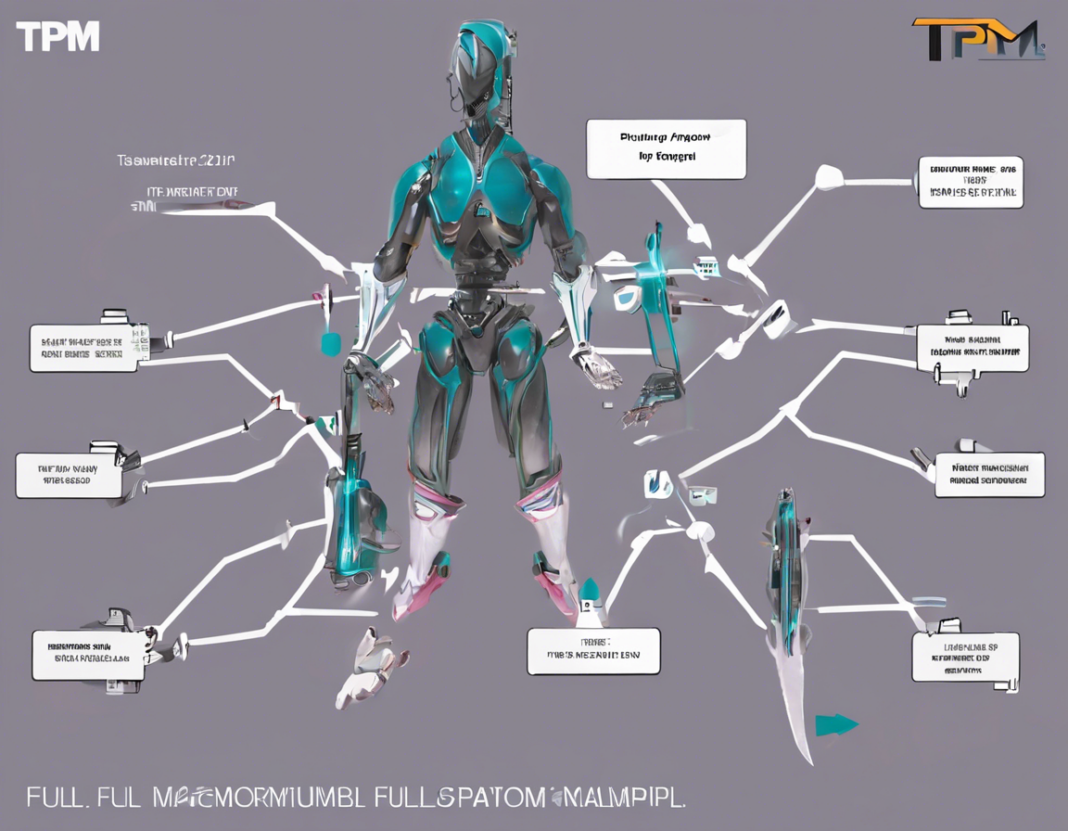Total Productive Maintenance (TPM) is a proactive approach to maintenance that aims to maximize the operational efficiency of equipment and machinery in a manufacturing or production environment. TPM focuses on involving all employees in the maintenance process to ensure that equipment is maintained in top condition to eliminate breakdowns, defects, and accidents. By implementing TPM, organizations can achieve increased productivity, reduced downtime, improved quality, and enhanced employee morale.
What is TPM?
TPM is a holistic approach to maintenance that involves everyone in the organization, from operators to maintenance staff, in the continuous improvement of equipment and processes. The goal of TPM is to create a work culture where everyone takes ownership of equipment reliability and performance. This approach goes beyond traditional maintenance practices by integrating maintenance into the daily work routine of operators, focusing on preventive maintenance, and emphasizing the importance of a clean and organized work environment.
The Pillars of TPM
TPM is based on eight pillars that serve as the foundation for the implementation of the methodology:
-
Autonomous Maintenance: Operators are trained to perform routine maintenance tasks to keep equipment in optimal condition.
-
Planned Maintenance: Scheduled maintenance activities are planned in advance to minimize unplanned downtime.
-
Quality Maintenance: Focuses on preventing defects and improving the overall quality of products.
-
Focused Improvement: Encourages employees to identify and implement small improvements in their work areas to increase efficiency.
-
Early Equipment Management: Involves the consideration of maintenance requirements during the design and acquisition of new equipment.
-
Education and Training: Ensures that employees have the necessary skills and knowledge to perform their roles effectively.
-
Safety, Health, and Environment: Emphasizes the importance of maintaining a safe and healthy work environment.
-
Administrative and Office TPM: Extends the principles of TPM to non-production areas of the organization.
Benefits of TPM
Implementing TPM can lead to a wide range of benefits for an organization, including:
- Increased Equipment Reliability: By focusing on preventive maintenance and early detection of issues, equipment downtime is reduced, leading to increased productivity.
- Improved Product Quality: TPM helps prevent defects by maintaining equipment in top condition, resulting in higher-quality products.
- Enhanced Employee Morale: Involving employees in the maintenance process empowers them and fosters a sense of ownership and pride in their work.
- Reduced Costs: By proactively maintaining equipment and preventing breakdowns, organizations can save on repair and replacement costs.
- Increased Overall Equipment Effectiveness (OEE): TPM aims to maximize OEE by improving availability, performance, and quality metrics.
Implementing TPM
Implementing TPM requires a systematic approach and a commitment from all levels of the organization. Some key steps in implementing TPM include:
- Management Support: Leadership commitment is crucial for the successful implementation of TPM. Management must champion the initiative and provide the necessary resources and support.
- Employee Training: Proper training is essential to ensure that all employees understand their roles and responsibilities in the TPM process.
- Creating a TPM Team: Establishing a cross-functional TPM team can help drive the implementation process and ensure that all areas of the organization are involved.
- Setting Goals and Objectives: Clearly defining goals and objectives is important to track progress and measure the impact of TPM on key performance indicators.
- Continuous Improvement: TPM is a continuous process that requires regular monitoring, evaluation, and adjustment to achieve optimal results.
Frequently Asked Questions (FAQs) about TPM
Q: What is the difference between TPM and traditional maintenance approaches?
A: TPM focuses on proactive and preventive maintenance, involving everyone in the organization, whereas traditional maintenance approaches are often reactive and performed by specialized maintenance staff only after a breakdown occurs.
Q: How long does it take to see results from implementing TPM?
A: The timeline for seeing results from TPM implementation can vary depending on the organization’s starting point, but some improvements may be seen in as little as a few months.
Q: Is TPM suitable for all types of industries?
A: While TPM originated in manufacturing industries, its principles can be applied to various sectors, including healthcare, transportation, and services.
Q: What are some common challenges in implementing TPM?
A: Challenges in implementing TPM may include resistance to change, lack of management support, insufficient training, and difficulty sustaining commitment over the long term.
Q: How can organizations measure the effectiveness of TPM?
A: Key performance indicators such as equipment downtime, OEE, maintenance costs, and product quality can be used to assess the effectiveness of TPM implementation.
In conclusion, TPM is a powerful methodology that can help organizations optimize their maintenance processes, improve productivity, and drive continuous improvement. By promoting a culture of proactive maintenance and involving all employees in the process, organizations can achieve significant benefits in terms of equipment reliability, product quality, and overall operational efficiency. Through careful planning, training, and commitment, organizations can successfully implement TPM and reap the rewards of a well-maintained and highly efficient production environment.









